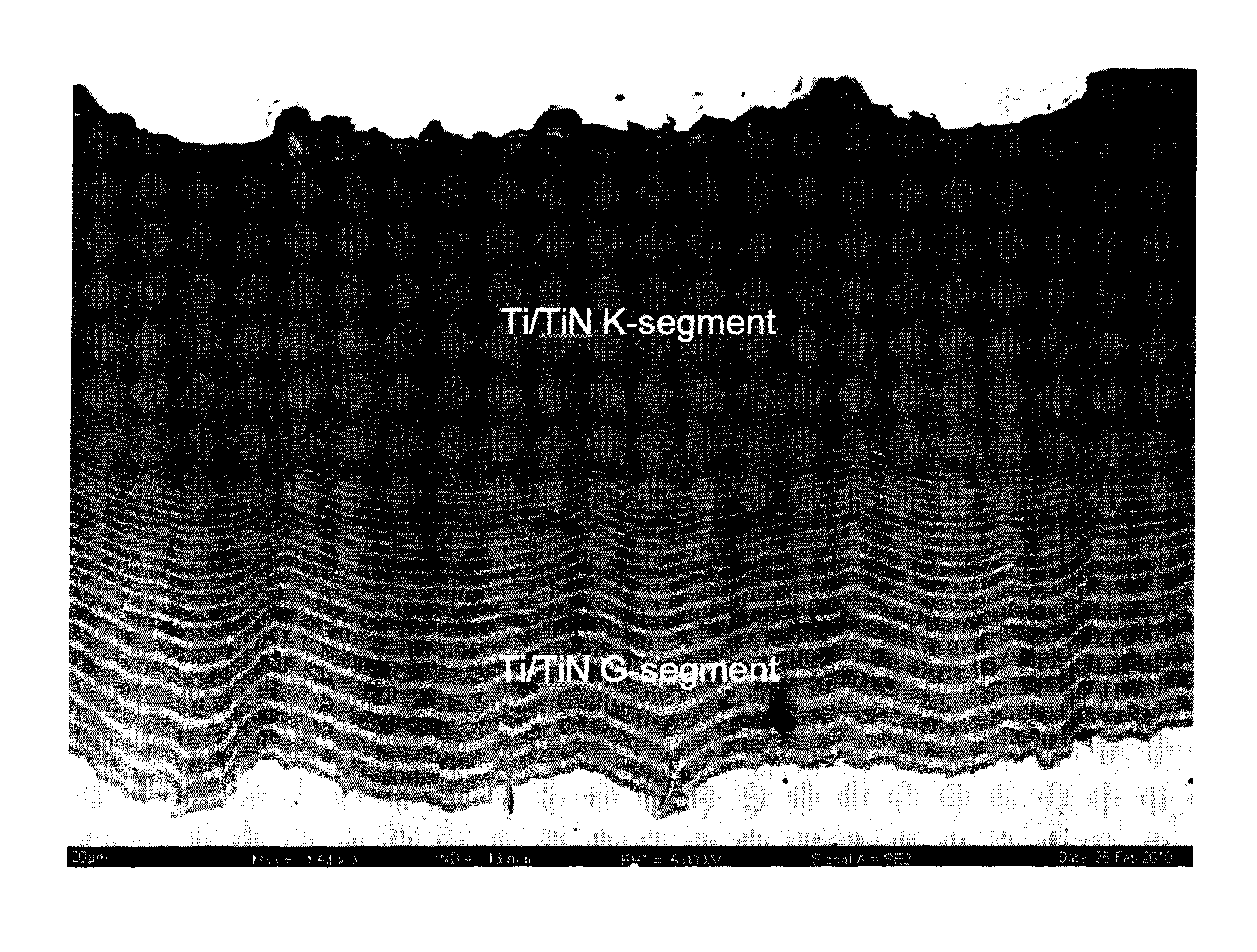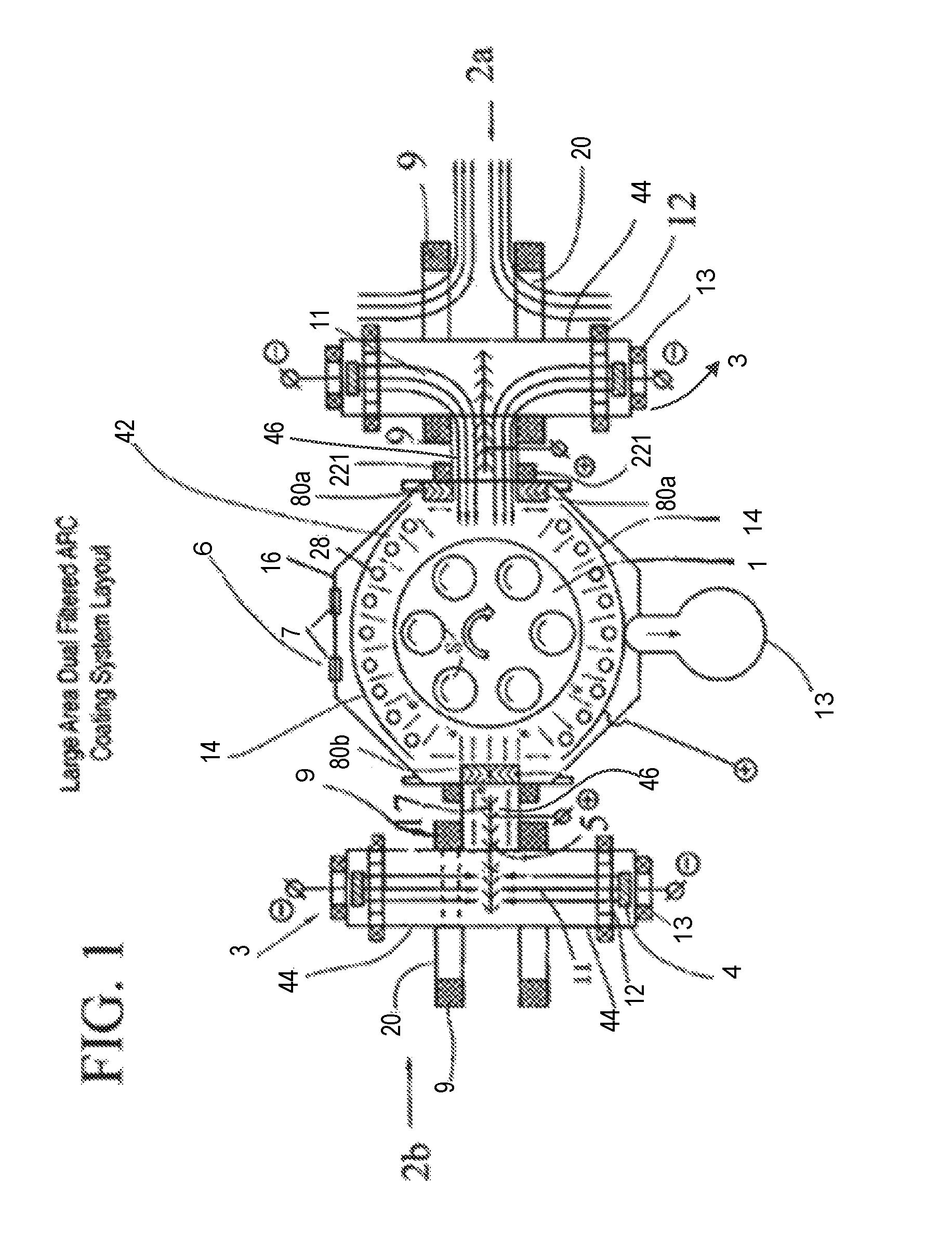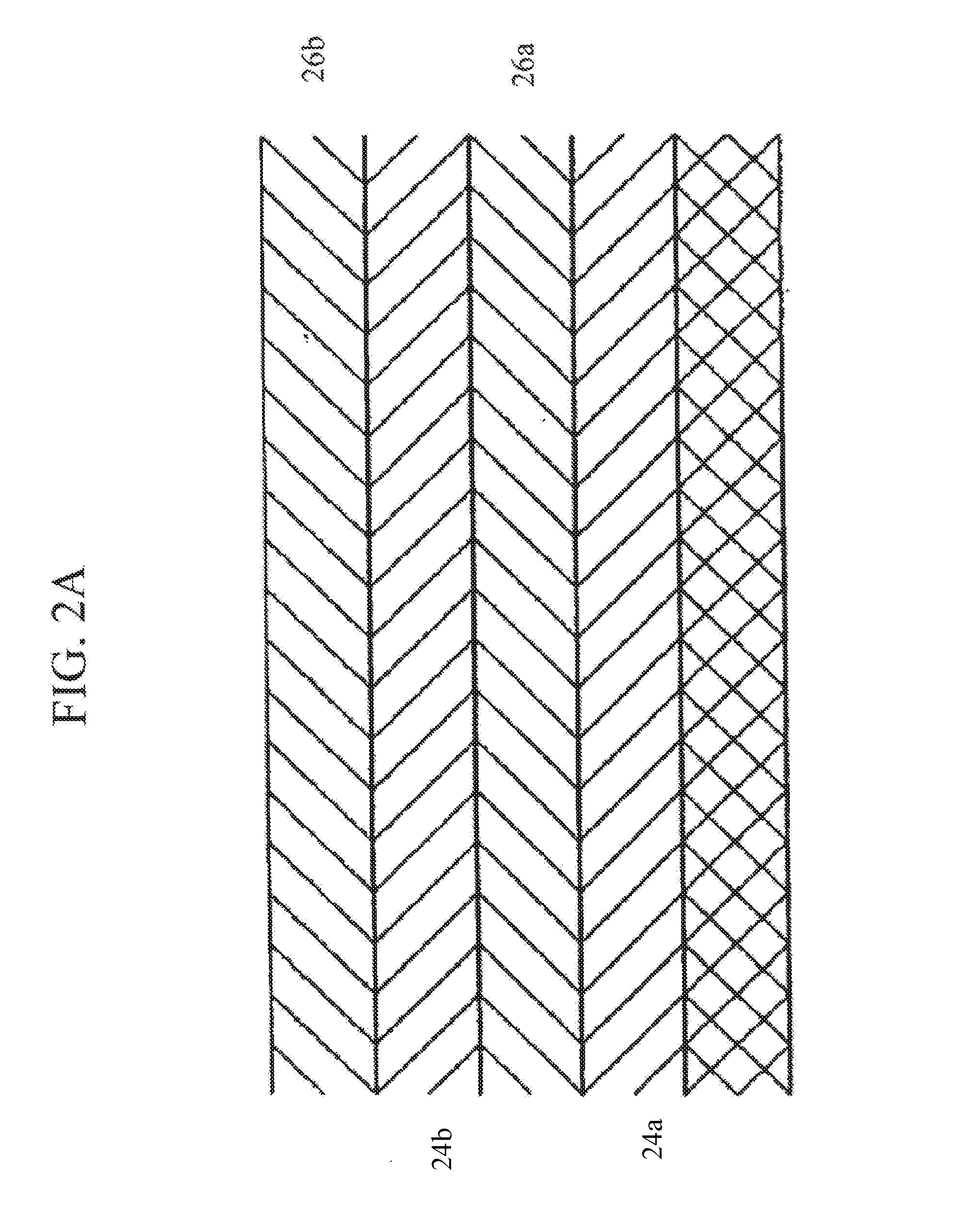Erosion and corrosion resistant protective coating for turbomachinery methods of making the same and applications thereof
a technology of corrosion resistance and protective coating, which is applied in the direction of machines/engines, mechanical equipment, superimposed coating process, etc., can solve the problems of debonding and delamination of the composite skin of the blade, wear, delamination of the rotor blade components of the helicopter, etc., to achieve high flexibility, high erosion and corrosion resistance properties, and high reflectivity of sun radiation
- Summary
- Abstract
- Description
- Claims
- Application Information
AI Technical Summary
Benefits of technology
Problems solved by technology
Method used
Image
Examples
example 1
Large Area Filtered Arc Deposition of Erosion and Corrosion Resistant TiAlN Multilayer Multi-Segment Coating on Metal Sheets, Foils, Instruments and Machine Components
[0064]The arc coating apparatus shown in FIG. 1 is used in this process. The apparatus is equipped with two dual-filtered arc sources, 2a and 2b having round cathodes 4 measuring 3″ in diameter and 2″ in height, one filtered arc source 2a having titanium targets and the other 2b having aluminum targets. The exit openings of the filtered arc sources are equipped with load lock shutters 80a, 80b, electron-permeable to provide a free passage of electron current from the cathode targets 4 to distal auxiliary anodes 14 to thereby establish an auxiliary arc discharge.
[0065]A 12″ wide×60″ long× 1 / 64″ thick stainless steel metal strip as a substrate 8 is installed around the turntable 1 with the center of the strip positioned at an even height with the center of the opening of the plasma duct 46. The metal strip substrate is s...
example 2
Deposition of a 2-Segment Microlaminated Ti / TiN Coatings by the LAFAD Process
[0067]A Ti / TiN microlaminated coating was deposited by an LAFAD process on 1″×1″×⅛″ square coupons made of Ti6Al4V alloy. The coupons were pre-treated by wet blasting prior to loading them in the vacuum chamber 6 of the coating system shown in FIG. 1. Only one unidirectional dual LAFAD source 2 was used in this process. Both primary cathodic arc sources 3 of the LAFAD source 2 were equipped with titanium targets. The substrate coupons 8 were installed on turntable 1 with a single rotation at a rotating speed of 12 RPM. In SR mode, the substrates are rotated around the axis of the turntable with their front surface facing the chamber walls. The coating process consists of pre-heating to 350° C., twenty minutes of ion cleaning, and two minutes of high voltage (1000V) metal ion etching; followed by coating deposition steps in a pressure range from 0.4 to 0.8 mTorr. To provide a substrate bias during the coatin...
example 3
Deposition of DLC Coating on Water Cooled Aluminum Substrates by a LAFAD Process
[0069]The DLC coatings were deposited by one unidirectional LAFAD plasma source installed in a coating system similar to that shown in FIG. 1. Aluminum disk coupons 60 mm dia×5 mm thick and aluminum strips 100 mm long×60 mm wide×5 mm thick were installed on turntable 1 attached to the water-cooled copper blocks using thermal conducting paste. An example of the curved protector airfoil 9 attached to the water cooled copper block 8 for deposition of the carbon DLC is shown schematically in FIG. 12. The copper block 8 has water inlet 10a and outlet 10b. The coating chamber was evacuated to the ultimate vacuum of 10−6 torr. Both primary cathodic arc sources 3 of the LAFAD plasma source 2 were equipped with high purity graphite targets 4. The additional anode grid made of tungsten bars ½″ thick with the distance between the bars ¾″ was installed in front of the graphite target to provide a better stability of...
PUM
| Property | Measurement | Unit |
|---|---|---|
| thickness | aaaaa | aaaaa |
| width | aaaaa | aaaaa |
| thickness | aaaaa | aaaaa |
Abstract
Description
Claims
Application Information
 Login to View More
Login to View More - R&D
- Intellectual Property
- Life Sciences
- Materials
- Tech Scout
- Unparalleled Data Quality
- Higher Quality Content
- 60% Fewer Hallucinations
Browse by: Latest US Patents, China's latest patents, Technical Efficacy Thesaurus, Application Domain, Technology Topic, Popular Technical Reports.
© 2025 PatSnap. All rights reserved.Legal|Privacy policy|Modern Slavery Act Transparency Statement|Sitemap|About US| Contact US: help@patsnap.com



